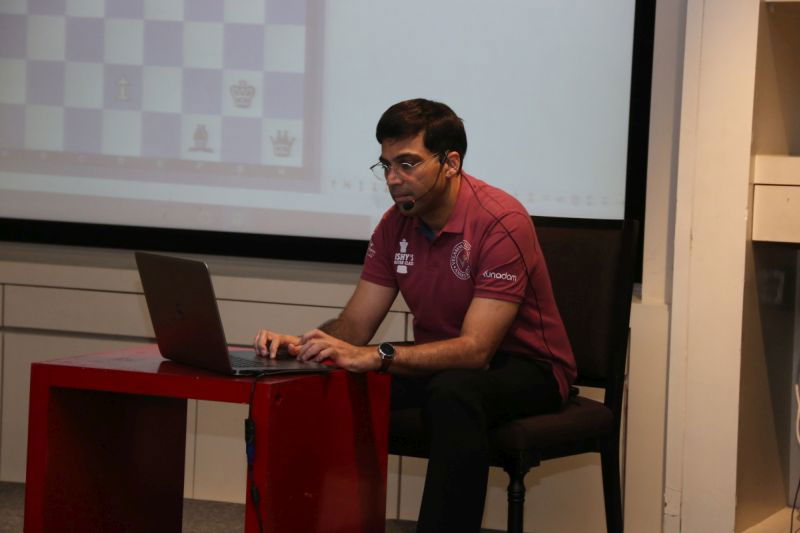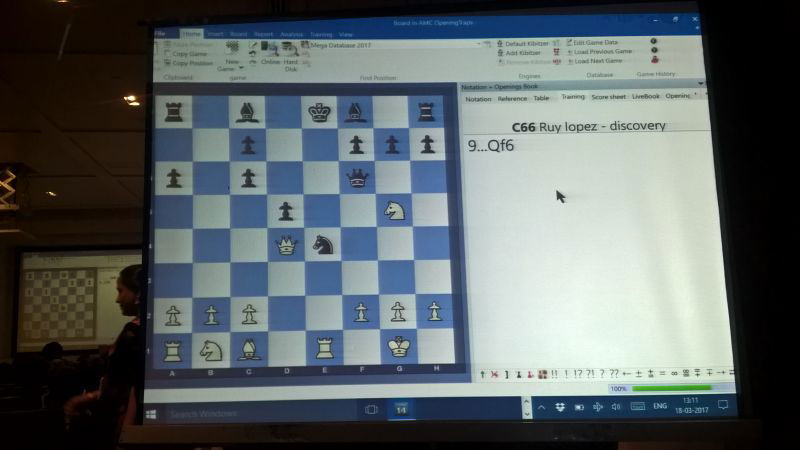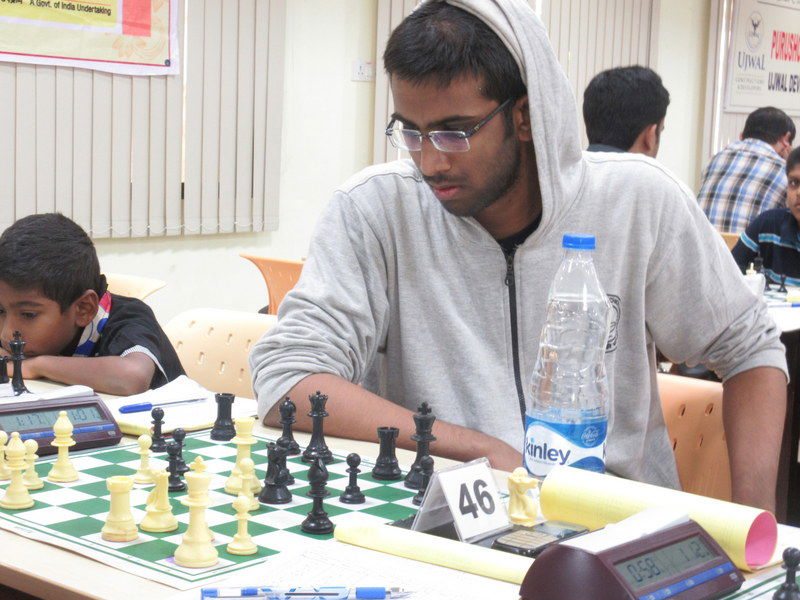Anand's Master Class Day 2: Openings, Openings and Openings!
All of us know that the study of openings is an important element in order to improve at chess. After all it is the first phase of the game. But very few have the right approach towards studying it. On day two of the Masterclass with Vishy Anand, the five-time World Champion dealt with the subject of openings in great depth and told the students how exactly things are done at the highest level. ChessBase India's Nitin Pai was present at the venue and brings to you the detailed coverage.
The Master Class by Vishy Anand is being held from 17-19th March 2017 at Park Hyatt Hotel, Chennai.

The event is being jointly organised by Velammal school in association with Golden Goose Sports pvt limited, Chennai.
After discussing some end game themes on day 1, day 2 began with Saravanan greeting the students at 9.30 am and announcing the plan for the day, which was opening preparation and traps.

The classes are being conducted for 2 different batches, divided based on ratings into Intermediate (below 1500 elo) and Advanced (above 1500 and all the way up to IM level).
In the Initial half an hour, Saravanan engaged both batches. The first thought for the day was that opening preparation is not as important as kids and beginners today consider it to be, however, a decent knowledge of openings is essential for one to come safe out of the opening and reach a playable middle game. Various opening principles were revisited, including centre control, rapid development of pieces, not moving the same pieces again, making few pawn moves and so on.

Then Sara introduced to the beginners to some of the good choices of black against 1.e4, keeping in mind the above principles. He recommended that kids play 1..e5, c5, e6 or c6 and avoid openings like the Pirc, Alekhine and Old Indian until a certain level of understanding or game strength was achieved. He then went on to apply the same principles against 1.d4,explaining 1..d5, King’s Indian, Grunfeld, Benoni and so on.

Vishy Arrived at 10 a.m. and now the class was divided with Vishy handling advanced batch first and Sara the intermediate.

The discussion then moved onto the QGD, Nimzo, Bogo, Catalan and essentially covered family of openings with 1.d4, c4 and Nf3 and various transpositional possibilities and importance of move order. He gave examples of his preparation against Carsen, Naka and MVL and also gave us an insight into how they build their repertoires, in the above lines. He went to say how Carlsen picks up subtle sidelines well and employs them and also how Carlsen’s repertoire is ideal against Naka. He explained how one could avoid certain variations like the Ragozin or Meran and sometimes even the entire Nimzo-Indian defence just by delaying d4 or some other changes in move order, but this would mean that White would then have to look at some variations of say the QGD with Nbd7, into which the game may transpose, so we essentially have a trade-off.

Anand advised the youngsters to follow and study the games of a certain player for each opening like MVL for Najdorf. On choice of openings at top level, he explained how sharp openings are being avoided as computers give them an equal evaluation after checking for some time. Vishy suggested changing openings regularly and have wide choices like Naka and Ivanchuk do, and one should be comfortable playing any structure. However, Vishy admitted that it would be almost impossible for him to now learn the King’s Indian. Anand concluded the session for the advanced batch by saying that opening preparation nowadays has become highly flexible and computer based.

The advanced batch including the likes of Praggu, Siva Mahadevan, Iniyan and other talented kids like D Gukesh and Rakshitta Ravi.
Vishy then moved onto the Intermediate batch and now had a treat for us,1.e4 players. He started off with looking at White’s approach against the French Defence, discussing the advanced, Steinitz and Tarrash variations. Vishy then asked the students for an opening of their choice and to my delight, a large section of the crowd went for the Sicilian Dragon, the most popular opening at club level.
Anand started with the discussion on the classical variation with 6.Be2, with few white games played by Kramnik and how this could also be played with colours reversed arising from the English opening, with an additional move for white. He then moved onto the critical Yugoslav attack after 9.Bc4 and after 12.h4 h5, Vishy recommends 13.Kb1 for white, pointing out that after 12.g4, Black has to play b5 or else would be behind in the attack. He also asked students to spend some time on 9.0-0-0 d5 after which 10.Qe1 and Kb1 have recently gained popularity. He concluded the discussion by saying that he would not go to the extent of calling it a bad opening but would only recommend its occasional use.
The next choice of opening was the Morra Gambit, to which one should play a6 at some point with Black and for White it was important to be aware of sacrificial possibilities in order to have any compensation. This was concluded by Anand adding that he had no immediate evaluation of the Morra and how Black could completely avoid all complications by playing 3..Nf6 and transposing to the Alapin. After this the session was concluded and the participants took a break, with high tea. In the meantime Saravanan was handling the advanced batch.

After the break ,we had a combined session with Q&A by Anand. A student asked Vishy how one should approach the position when caught unprepared in the opening. The five-time World Champion suggested playing aggressive moves rather than passive as the later may result in slow but certain weakening of the position. He added that when one is confused in the opening and feels his/her opponent has done a good study, it is better to deviate from the course, even if slightly risky and that one has to be very alert when his/her position is passive.
The next question was regarding choosing an opening for a particular opponent, when one had a wide repertoire. Here Vishy said that one had to look at transpositional possibilities and the kind of position one was trying to achieve/avoid. Say a player with white can play both 1.e4 and d4 and wants to avoid say Najdorf/Berlin, it would be logical to start with 1.d4.
When a student asked how one should approach when the opponent has made an opening mistake, the master said that is when one has to concentrate more and take advantage rather than assuming the position would win on its own.
The class then moved onto a rapid fire session, where popular opening traps were revisited. Here are some of them for you-











That was the end of the day 2 program, with all the students applauding for our master. A large number of students then tried to hurry and get Vishy’s autograph or a selfie with him, however, they were assured that a special session would be arranged for this the next day.

About the author:


